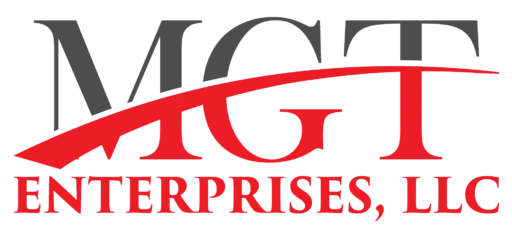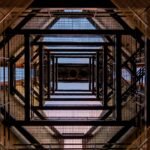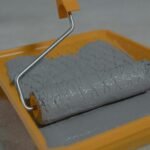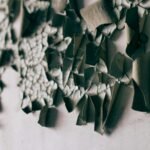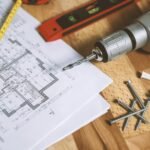Is your commercial roof crying out to you? Is the top layer of your building leaking water, sagging, and looking worse for wear? There may be more to it than just “getting older.” Your roof labors around the clock, fair weather and wild storms alike, to safeguard your business, products, workers, and daily routines.
This is why recognizing the early warning signs can mean all the difference. Understanding when to invest in a commercial roof replacement can prevent you from spending thousands on unexpected repairs as well as disruptive downtime. Regular roof inspections and an eye out for warning signs will keep you ahead of extensive damage.
1. Persistent Leaks and Water Damage
When you see recurring leaks that crop up again and again regardless of repairs, it usually means more in-depth problems with the structure or membrane of your business roof. Short-term patches may cover up water temporarily, but the problem below can still intensify beneath the surface.
Visible indications such as water spots on ceilings, bubbling or peeling paint, and mold or mildew growth on walls are obvious signals that your roof is in trouble. Such symptoms are more than a matter of aesthetics—they are symptoms of continuous water intrusion that can cause harm to your building’s interior.
With time, consistent moisture exposure can significantly weaken your roof’s insulation, causing energy inefficiency and increased utility costs. Furthermore, it can encourage wood and structural decay and require costly commercial roof repair in the future or lead to commercial roof replacement to protect your investment and prevent further expenses. Regular roof inspections can identify the issues before they intensify.
2. Visible Structural Deterioration
Some common visible symptoms of structural decay on a commercial roof include cracks, blisters, alligatoring, loose seams, sagging areas, and membrane shrinkage. They typically show up years after weather and wear have taken their toll on the roof.
This type of damage compromises the roof’s water-tight integrity and leaves the structure open to water infiltration and damage. Once the membrane or roof system begins to break down, leaks and structural issues become a very real possibility.
These are usually symptoms of extensive wear that cannot easily be repaired through spot repairs alone. In this situation, using patchwork can prove to be expensive and pointless. Complete re-roofing is the better option. Regular roof checks can identify such problems early enough to avert sudden roof failure and minimize the need for urgent roof repair work.
3. Age of the Roof
Your roof’s age is a direct factor in determining whether the time has come for a new roof or not. Different types of roofing materials have different lifespans. TPO and EPDM roofs will usually have a 20 to 30-year lifespan, while the average lifespan of a modified bitumen roof will range from 15 to 20 years. Metal roofs can last 50 years if they are properly maintained.
Even the most well-maintained roofs deteriorate in efficiency, strength, and resilience over time. Exposure to weather, temperature variations, and everyday usage slowly degrades the roofing system and makes it less protective of your structure.
As your roof gets older, you should expect the frequency and expense of repairs to escalate. This increased risk of failure makes consistent roof inspections imperative to find issues before they worsen. After the symptoms accumulate, the time may come when you need to think about a commercial roof replacement versus recurring commercial roof repair.
4. Frequent Repairs and Escalating Maintenance Costs
If you find yourself requesting commercial roof repairs over and over again, particularly in the same areas, it’s a strong indication that your roof may be beyond minimal repairs. Oftentimes, the patching might feel like the easy and inexpensive option, but the more you patch the roof over time, the more you can end up paying in the long run than replacing the roof entirely.
For instance, sealing a leak over and over or patching blisters will stall issues momentarily, but will not correct structural concerns. The more repairs that are accumulated, the higher the maintenance expense and the more the condition of the roof deteriorates overall.
Building owners need to look at the larger perspective, comparing the cost over the lifetime of repeated roof repairs to the investment in a new roof. By considering the value over the long term, it is usually wiser and more economical to replace the roof before business operations are interrupted and further destruction is done through the use of emergency repairs. Regular roof inspections catch those patterns early.
5. Energy Efficiency Decline
As a commercial roof ages or is damaged, the insulation usually gets compromised as well, directly affecting heating and cooling performance. Compromised insulation or deteriorated membrane materials result in more difficulty maintaining indoor temperature consistency and require the heating and cooling system to operate overtime.
Leaks, cracks, and worn-down surfaces let the air out, resulting in temperature variations in the building. This inefficiency means increased utility costs and a more uncomfortable work environment for workers.
Upgrading to new commercial roof materials, such as reflective TPO roofing or green roof systems, can also greatly enhance insulation. By decreasing energy usage and lowering cooling costs, commercial roof replacement can be a sound investment.
6. Interior Signs of Roof Failure
Water spots on walls and ceilings, mold coming through vents, and bubbling or peeling paint are typical interior symptoms suggesting impending commercial roof failure. These are usually symptoms of leaks or moisture entering the building from the roof over a long period and causing latent behind-the-scenes deterioration over the years.
As soon as you spot such interior issues, it’s important you book a roof inspection by a qualified expert early enough. Roof inspection can detect issues early and avert expensive commercial roof repair or roof replacement before they escalate and cause harm to the structure and the people within your building.
Final Thoughts
Persistent leaks, wear and tear on the structure, system age, increased energy costs, and water intrusion inside the building are all indicators that it’s time to look at commercial roof replacement. Timely roof inspection and intervention can prevent expensive commercial roof repair problems. Talk with a qualified roofing expert to discuss safe and efficient solutions customized to your structure’s specifications.

